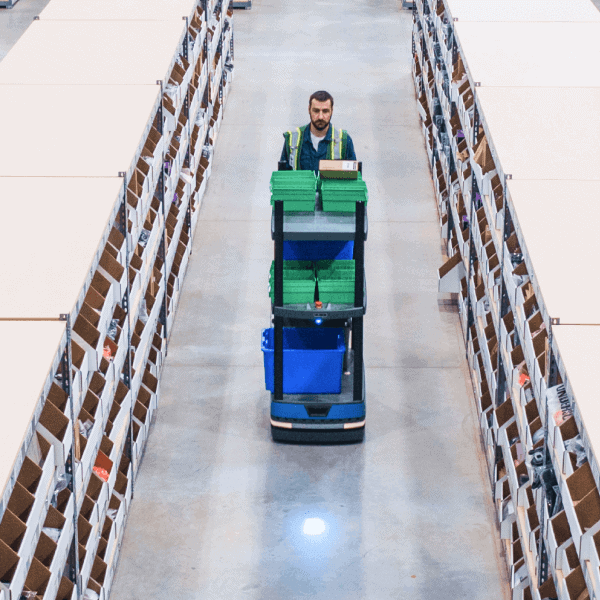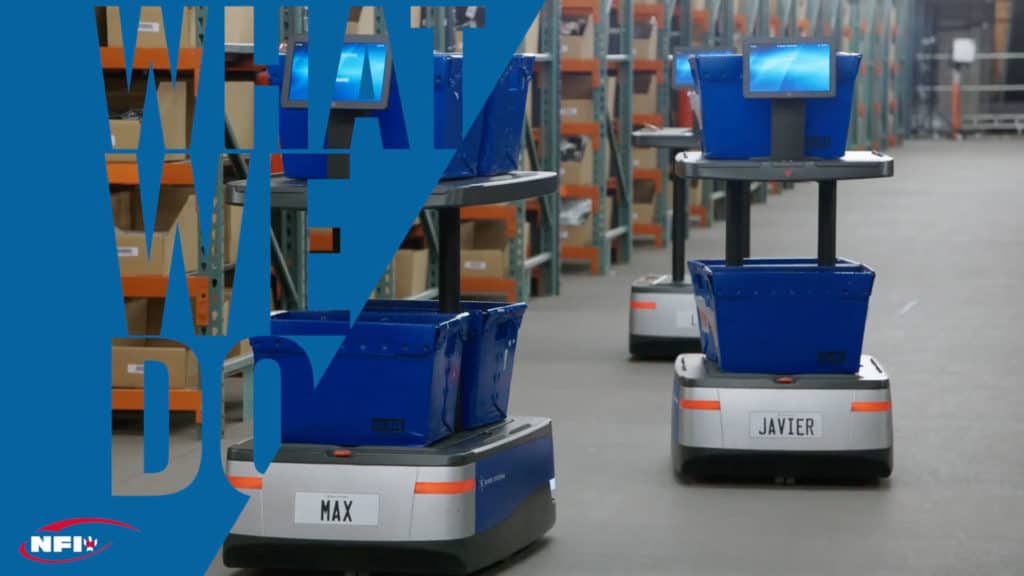A conveyor system is a fast and efficient mechanical handling apparatus for automatically transporting loads and materials within an area. This system minimizes human error, lowers workplace risks and reduces labor costs — among other benefits. They are useful in helping to move bulky or heavy items from one point to another. A conveyor system may use a belt, wheels, rollers, or a chain to transport objects.
How do conveyor systems work
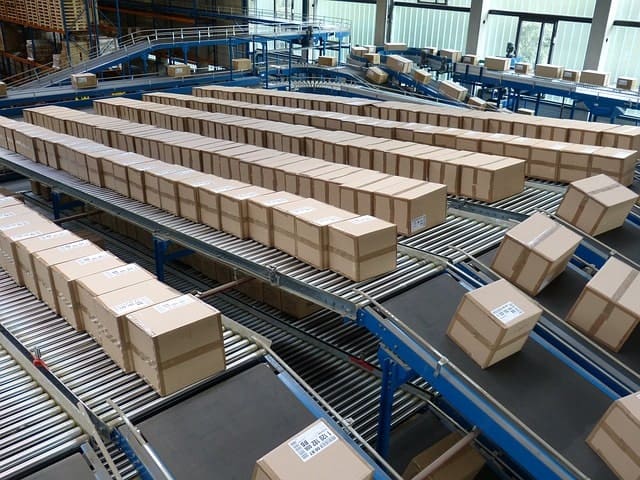
Typically, conveyor systems consist of a belt stretched across two or more pulleys. The belt forms a closed loop around the pulleys so it can continually rotate. One pulley, known as the drive pulley, drives or tows the belt, moving items from one location to another.
The most common conveyor system designs use a rotor to power the drive pulley and belt. The belt remains attached to the rotor through the friction between the two surfaces. For the belt to move effectively, both the drive pulley and idler must run in the same direction, either clockwise or counterclockwise.
While conventional conveyor systems such as moving walkways and grocery store conveyors are straight, sometimes, the unit needs to turn to deliver the items to the proper location. For the turns, there are unique cone-shaped wheels or rotors which allow the belt to follow a bend or twist without getting tangled.
Benefits of conveyor systems
The main purpose of a conveyor system is to move objects from one location to another. The design allows for movement of objects that are too heavy or too bulky for humans to carry by hand.
Conveyor systems save time when transporting items from one location to another. As they can be inclined to span multiple levels, they make it simpler to move items up and down floors, a task that, when performed manually by humans, causes physical strain. Inclined belts can automatically unload material, eliminating the need for someone to be on the opposite end to receive pieces.
Types and examples of conveyor systems
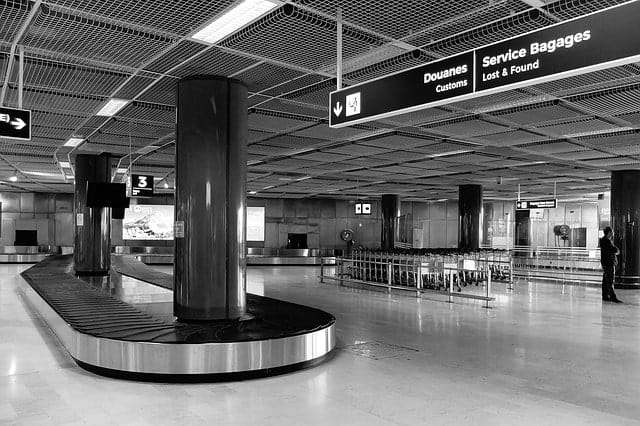
You can probably imagine a large warehouse filled with conveyors using belts and rollers to move boxes and other heavy equipment, but this is just one of several types of conveyor systems. You’ll also find conveyor systems in airports, where they’re used to transport luggage. Other examples include escalators and ski lifts. These apparatuses still use a belt or chain and pulleys to move heavy items from one point to another.
There are many types of conveyor systems, including:
- Belt
- Roller
- Slat/apron
- Ball transfer
- Overhead
- Pneumatic
- Bucket
- Chute
- Magnetic
- Vertical
- Wheel
- Walking beam
- Vibrating
- Screw/auger
- Chain
Each type of conveyor serves a specific purpose. For example, a slat conveyor, made from slats or plates instead of a belt, is designed for moving heavy materials. The materials conveyed by a slat system are typically too large or heavy for traditional belt movement.
An escalator is an example of a chain-driven conveyor system. Instead of having a pulley system that pulls items along, the chain conveyor uses a towing system that pulls the steps in an upward or downward motion.
Ski lifts are an example of an overhead conveyor. These units use an electric track inclined to pull the chairs up or down the mountainside. Like an escalator, these systems use a chain-driven towing system.
Essential parts of a conveyor system
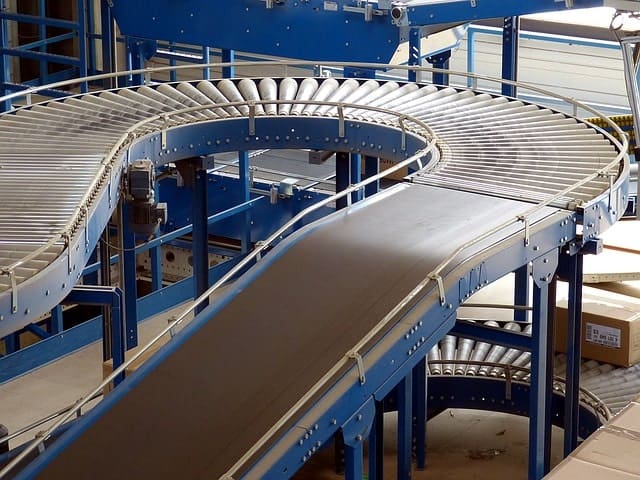
There are three main parts of a conveyor system: the belt support, the pulley and the drive unit. Each component plays an essential role in the conveyor unit’s operation. While all conveyor systems contain these parts, designs vary in the construction materials and where each component is located.
Belt support is the component that ensures the belt moves smoothly. If the support unit is not firm, the belt sags when workers place a heavy object on top, and the sagging causes the belt not to move smoothly or swiftly as it should. The use of a firm support unit keeps the belt taut and running efficiently.
The pulley system is an external component used to control the belt movement. Each unit has at least two pulleys, one that operates under power and an idle one. More complex conveyor systems may have additional rotors throughout the frame.
The drive unit allows the system to move. The unit contains a counter bearing that keeps the parts moving efficiently. This unit also allows for the belt to move in reverse and manage the repeated adjustments in direction for some systems. Some conveyor systems are manually operated. These systems still use a drive unit; however, it is not motorized.
How to choose the right conveyor system
A conveyor more or less acts as a central nervous system for operations that receive, handle, store, distribute, manufacture or ship products. Selecting the right conveyor system can be challenging for warehouse managers and other stakeholders due to the several conveyor types and hundreds of possible configurations to choose from.
Also, there are several factors to consider when trying to identify and purchase the ideal conveyor system for your warehousing or distribution facility. You should simultaneously consider both product and process requirements.
First off, an ideal conveyor system must be:
- Operationally safe
- Energy efficient
- Reliable (parts and components engineered to last)
- Adaptable to changing needs
- Cost-effective (in terms of TCO, or total cost of ownership)
Installing the wrong conveyor system will quickly undermine a warehouse’s operational efficiency, leading to higher cost and lower customer satisfaction, eventually stripping the business of its competitive advantage.
Without further ado, let’s explore factors to consider when evaluating and selecting the right conveyor system for your operation.
Product requirements
Essentially, a conveyor system is used to move items between functional areas of a distribution facility. As such, the type of item(s) to be moved will determine the design, dimensions and type of conveyor system to be installed.
When searching for the best conveyor system for your facility, answering the following questions will help you ascertain design and configuration requirements and help you calculate things like horsepower and belt pull for individual conveyors:
- What type of product is being conveyed?
- What is the average weight per foot of product?
- What is the maximum weight of the products?
- What are the minimum, maximum and average dimensions of the product (i.e., length, width and height)?
- What is the dimensional data for each product?
- How are the products being conveyed and in what orientation?
Factors such as product weight, dimensions and fragility will greatly impact your decision process. The dimensions of the items in your facility will determine conveyor width, guide rail specifications and roller centers, while the weight of the products will decide roller gauge, roller diameter and motor sizing requirements.
Process requirements
Process requirements cover factors governing how the conveyor should move and the unique conditions of the operating environment. These considerations include:
- The distance items need to move between functional areas
- The pathway through which it moves — are there stops, elevation changes, curves or diversions?
- Product orientation — must items be positioned in a particular way (for easy scanning of barcodes, transfer, etc.)?
- Transfer speed — short, rapid movement or slow, steady movement?
- Ambient environment
- Available space
Flow rate
Your conveyor system should be able to handle your facility’s average transfer rate as well as periods of peak demand due to seasonal fluctuations. The number of products you need to transport per hour (or per minute) will determine conveyor length and speed.
Also, certain kinds of conveyors are ideal for certain products. A large plastic chain conveyor is best used for transferring plastic-footed pallets, while a chain-driven roller conveyor is best suited for wooden pallets. Also, the former is best used for moving smaller boxes or totes than the latter.
Transfer requirements
The point where items are transferred to and from the conveyor is a critical one. Most conveyors use side to side transfers, powered transfers, dead plates, gravity rollers, etc. to facilitate this. Products with a smaller footprint may require a powered transfer, while larger and longer products may need gravity rollers.
How much do conveyor systems cost?
For modern warehouses, manual transfer operations are unable to keep up with throughput levels required for speedy order fulfillment cost-efficiently. A conveyor system increases productivity, improves ergonomics, reduces product damage and makes for better access to materials and fewer workplace hazards.
However, the lifetime cost of purchasing, installing and maintaining such systems may be high for small and medium-size operations. It can range from the hundreds of thousands of dollars to millions, depending on factors such as:
- Type of conveyor system
- Overall length
- Required speed
- Dimensions
- Curve and transfer method
Current estimates show that a Belt Curve AC and a Roller Curve AC conveyor cost approximately $5,243 and $2,686 per linear foot — under the following assumptions:
- Curves — 90 degrees
- Speeds — 65 to 90 feet per minute
- 9-inch rollers on 3-inch centers
- Overall width — 24 inches
Note: This is just the upfront cost of the conveyor equipment. Aside from installation costs, you’ll also need to factor in the cost of restructuring your warehouse space to accommodate the conveyor system. The installation process itself could take a while and would affect order fulfillment and other warehousing activities. Lastly, operating and maintenance costs per year would likely exceed the initial purchase and installation costs.
If you’re considering a conveyor system, consider your budget, the speed at which you need to complete your work, space and other constraints, and of course, your loading and unloading plans. For instance, conveyor systems aren’t portable and they require substantial changes to your infrastructure. However, other practical and more affordable solutions exist to automate (and improve) your warehouse operations.
Download our white paper, 7 Reasons Why Warehouse Robots Beat Traditional Automation, to learn more about how warehouse robots like Chuck are a smarter, more cost-effective solution compared to traditional automation solutions like conveyor systems. We can also discuss the solution that’s right for you. Contact us today.

